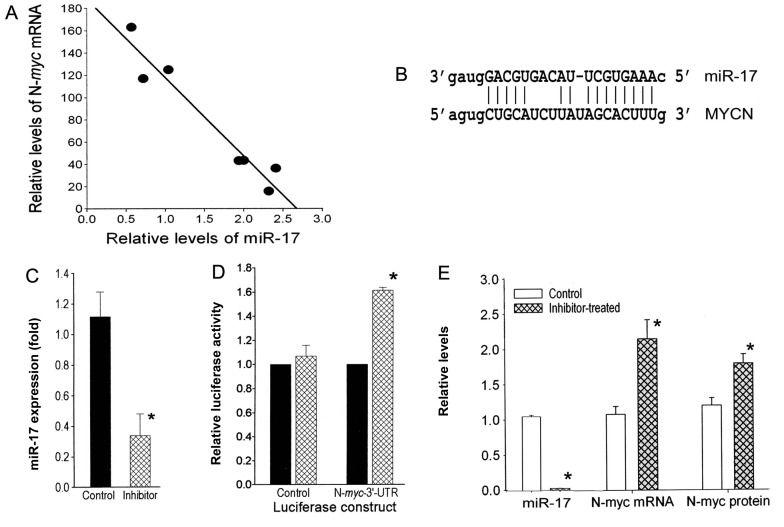Figure 1.
N-myc is a target of miR-17. (A) Linear regression analysis showing an inverse correlation between miR-17 and N-myc mRNA levels in the 8 N-myc-amplified human neuroblastoma cell lines (R2=0.98; P<0.001). (B) Predicted complementary base pairing between miR-17 and the 3′-UTR of N-myc (www.microrna.org). (C) miR-17 levels in SK-N-LD cells expressing the Luciferase-N-myc-UTR reporter gene or the Luciferase vector revealed a decrease of 3.33-fold (*P<0.05) when treated with an miR-17 inhibitor compared to the control-treated cells. (D) Inhibitor treatment increased the luciferase activity 1.55-fold (*P<0.01) in cells expressing the Luciferase-N-myc-UTR construct, but had no effect on the Luciferase vector transfectants. (E) Inhibitor-treated SK-N-LD cells with a 33.3-fold (*P<0,01) decrease in the levels of miR-17 had a 2.1-fold increase in N-myc mRNA (*P<0.01) as determined by qRT-PCR and a 1.5-fold increase in N-myc protein (*P<0.02) compared to the untreated control (n=3).

